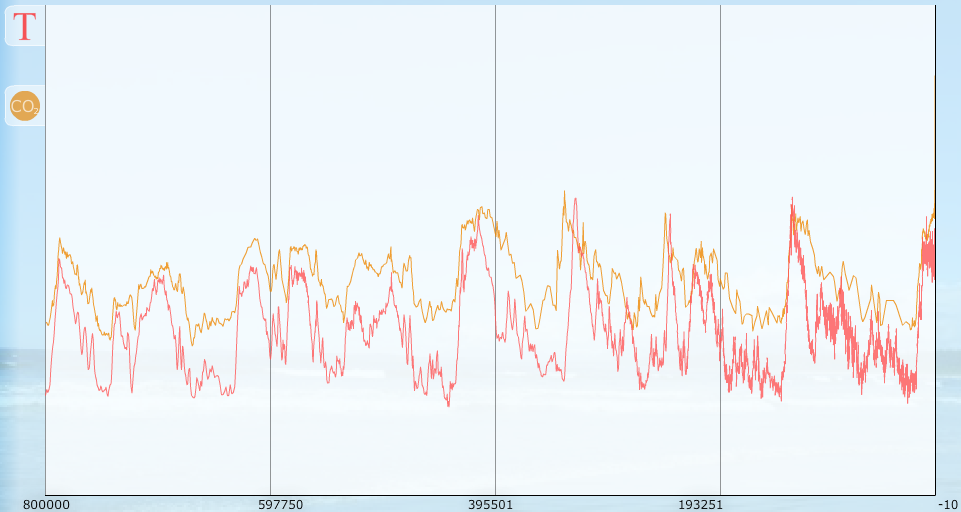As you can see in the graph below, atmospheric carbon dioxide concentrations and temperature have varied together at least the past 800,000 years. Clearly, carbon dioxide concentrations are closely correlated to changes in Earth’s climate. In fact, carbon dioxide has been called Earth’s thermostat because of the close association between the concentration of carbon dioxide in the atmosphere and the temperature of the Earth. As carbon dioxide concentrations increase, temperatures tend to rise. Then, various Earth system processes regulate the concentration of atmospheric carbon dioxide and stabilize temperature.

However, while the fact that carbon dioxide concentrations are closely correlated to temperature establishes the importance of carbon dioxide as a greenhouse gas, the fluctuations in concentration that have occurred in the past presents a question. How do we know the changes in carbon dioxide concentrations that have occurred in the last 250 years are not due to some natural phenomenon? After all, there are many natural sources of carbon dioxide, including cellular respiration, decomposition of living organisms and volcanic eruptions.
Your Turn
Carbon dioxide plays an important role in the regulation of Earth’s temperature and has even been called Earth’s thermostat. Why can carbon dioxide be considered Earth’s thermostat?
Carbon dioxide can be considered Earth's thermostat because carbon dioxide concentrations and temperature change together.
The data shows that carbon dioxide levels are much higher during interglacial periods and lower when significant parts of Earth’s surface have been covered by glaciers. Various Earth system processes regulate the concentration of atmospheric carbon dioxide, and stabilize temperature. This is similar to how the temperature of a building can be regulated by adjusting the thermostat.